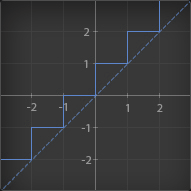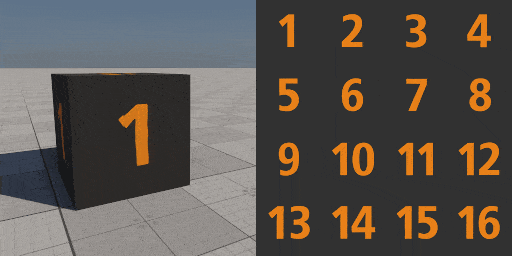Ceiling Node

Description
Outputs the smallest integer value, or whole number, that is greater than or equal to the input value.
For example:
- Ceiling(4,2) = 5
- Ceiling(-2,5) = -2
Usage Examples
Flipbook Animation
This material graph implements a flipbook for atlas-based texture animation, using the Ceiling node as a key component to control frame stepping over time.

The animation is driven by the Time node, which is multiplied by a custom FPS value to control the animation speed. The Ceiling node is then used to ensure that only whole-number frame indices are used — this prevents interpolation and ensures the texture only changes at discrete intervals, creating a clean frame-by-frame animation effect.
That frame index is then wrapped using Mod (for looping) and separated into column and row indices based on the texture atlas layout. These indices are then converted into UV offsets and combined with tiling data using the Tiling And Offset node, which then passed into the Sample Texture node as a new UV.
The information on this page is valid for UNIGINE 2.20 SDK.